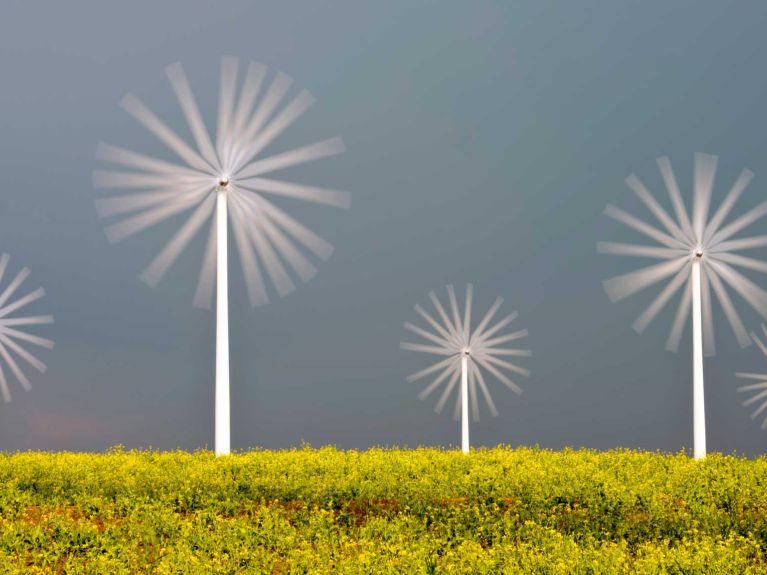Momentum for the energy transition
How the "Copernicus Projects" will revolutionize Germany's energy system.

Germany. The plan is ambitious: Germany wants to renew completely its energy system by 2025 for the energy transition. That is why the Federal Ministry of Education and Research (BMBF) launched in 2015 the largest research initiative on the energy transition to date, called the "Copernicus Projects". An important guideline was that business, science and society should all pull together.
Who is part of it?
The contract was awarded to four interdisciplinary research groups with 230 participating institutions. Ranging from basic research to operational readiness, they are developing technologies that will give the energy transition the decisive boost. The Ministry is funding the ten-year projects with a total of 400 million euros.
We will show that a safe, affordable and clean energy supply is feasible without sacrificing prosperity and jobs.
What are the biggest challenges of the energy transition?
A panel of experts has defined four core tasks for the Copernicus Projects:
- A power grid that responds flexibly to variations in wind and solar energy and power consumption.
- Storage of renewable energy.
- Adaptation of industrial processes to a fluctuating energy supply.
- Interaction of all sectors of the energy system - electricity, heat and mobility.
What are the Copernicus Projects about?
ENSURE
The consortium headed by Professor Holger Hanselka of the Karlsruhe Institute of Technology is working on conversion of the network. This includes digitization and the social acceptance of technology and infrastructure.
Dieses YouTube-Video kann in einem neuen Tab abgespielt werden
YouTube öffnenThird party content
We use YouTube to embed content that may collect data about your activity. Please review the details and accept the service to see this content.
Open consent formPower-to-X
Under Professor Walter Leitner of RWTH Aachen University, the consortium is developing ways to store surplus solar and wind energy in other energy carriers.
Dieses YouTube-Video kann in einem neuen Tab abgespielt werden
YouTube öffnenThird party content
We use YouTube to embed content that may collect data about your activity. Please review the details and accept the service to see this content.
Open consent formSynErgie
Eighty-three project partners are testing procedures that adapt industrial production processes to a fluctuating energy supply. The directors are the Technical University of Darmstadt and the University of Stuttgart.
Dieses YouTube-Video kann in einem neuen Tab abgespielt werden
YouTube öffnenThird party content
We use YouTube to embed content that may collect data about your activity. Please review the details and accept the service to see this content.
Open consent formENavi
All scenarios of the energy transition will be simulated in a complex navigation model. For example, how is it possible for households and industry to be always optimally supplied with energy? And how do political decisions affect the energy system? The project manager is Professor Ortwin Renn of the Institute for Advanced Sustainability Studies (IASS) Potsdam.
Dieses YouTube-Video kann in einem neuen Tab abgespielt werden
YouTube öffnenThird party content
We use YouTube to embed content that may collect data about your activity. Please review the details and accept the service to see this content.
Open consent formWhy is the research initiative named after Nicolaus Copernicus?
His name stands for scientific and social change. The astronomer discovered in the sixteenth century century that the earth revolves around the sun. This discovery radically changed the worldview of the time. In the same sense, the Copernicus Projects are intended to revolutionize the energy system.
Further information: Kopernikus-Projekte




